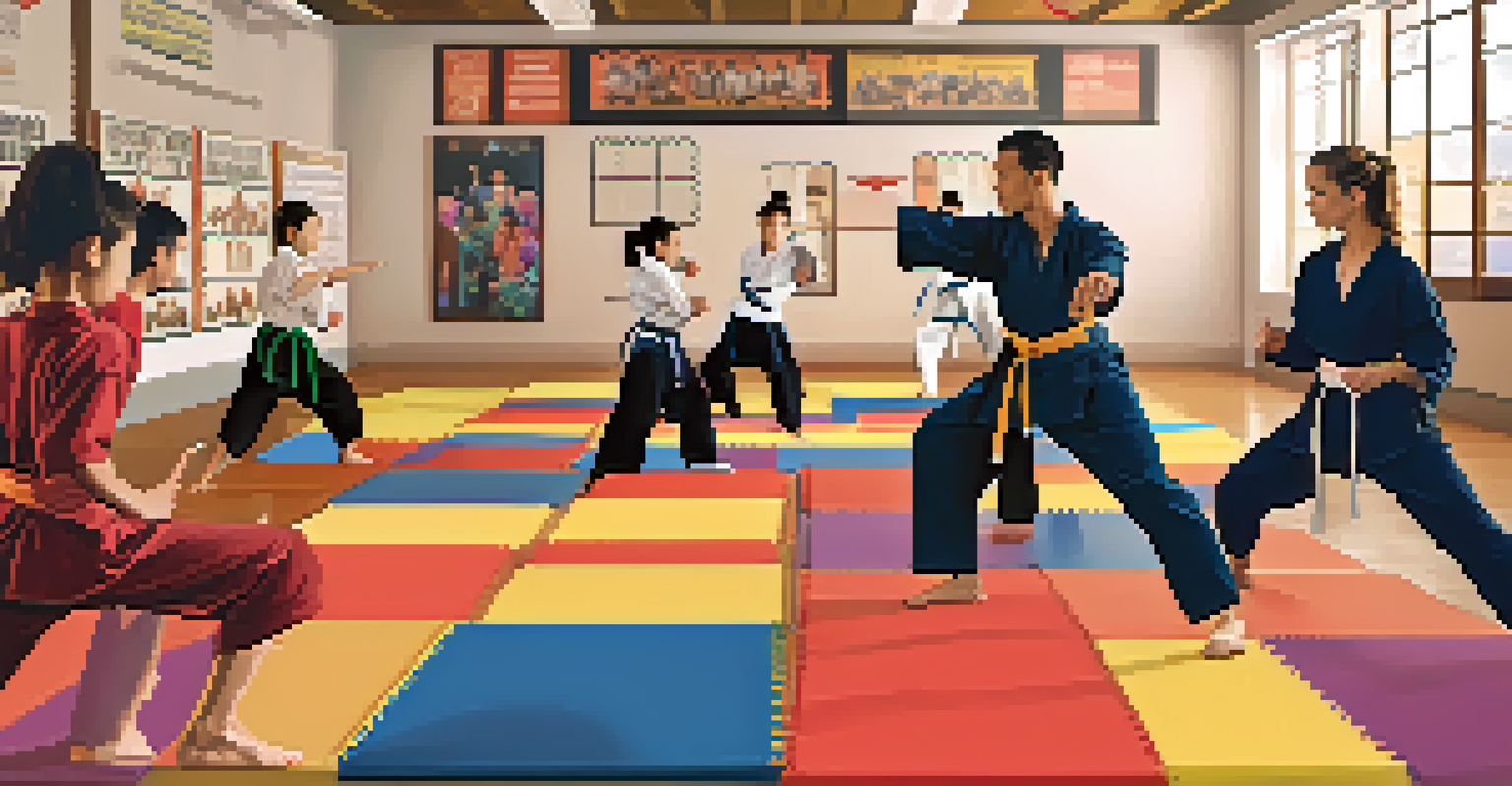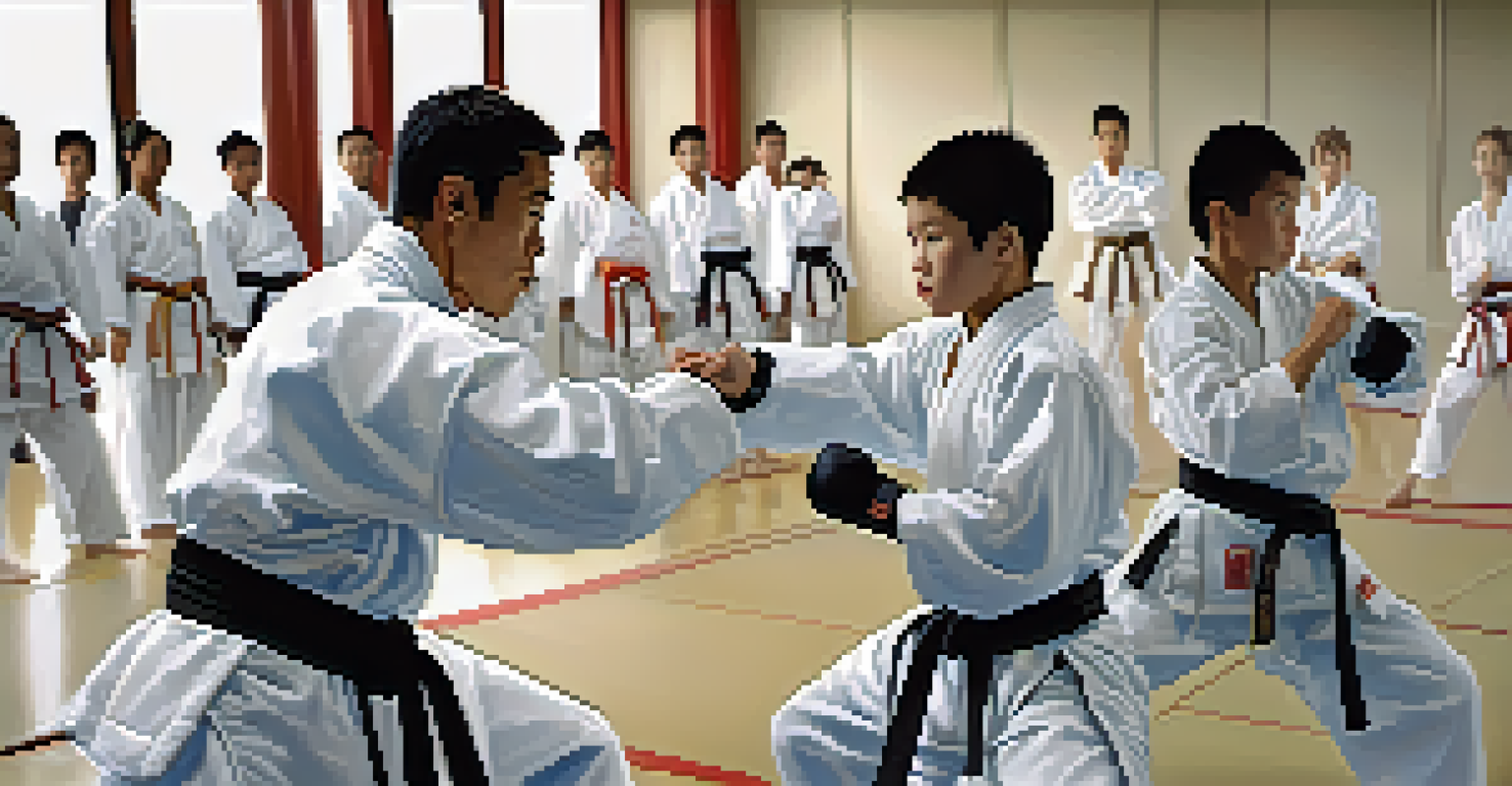Creating a Safe Training Environment in Martial Arts Schools

Understanding the Importance of Safety in Martial Arts Schools
Safety is the cornerstone of any martial arts school. Without a safe environment, students may feel anxious, which can hinder their ability to learn and grow. It's important to foster a culture where safety is prioritized, allowing everyone to focus on their techniques and skills.
Safety isn't just a policy; it's a culture that fosters respect and trust.
Creating a safe training environment not only protects students from physical harm, but it also enhances their overall experience. When students feel secure, they are more likely to engage fully and push their limits. This sense of security can lead to improved performance and greater retention rates in classes.
Moreover, a commitment to safety helps build trust between instructors and students. This trust is essential because it encourages open communication about concerns or injuries, ensuring that everyone can participate fully while minimizing risks.
Establishing Clear Safety Protocols and Guidelines
Having clear safety protocols is crucial in any martial arts school. These guidelines should cover everything from warm-up routines to proper techniques for sparring. By clearly communicating these rules, instructors set expectations that help keep students safe during training.

It's also important to regularly review and update these protocols as necessary. This ensures that they remain relevant and effective in addressing potential hazards. Including students in discussions about safety can foster a sense of ownership and responsibility among them.
Prioritize Safety in Training
A safe training environment enhances student engagement and performance.
In addition, displaying safety guidelines prominently around the training area serves as a constant reminder for everyone involved. This visual reinforcement can help maintain focus on safety throughout the training session.
Choosing the Right Equipment for Training
The right equipment can greatly enhance safety during martial arts training. This includes everything from mats and protective gear to proper footwear. Quality equipment not only helps prevent injuries but also supports effective training techniques.
In martial arts, the journey to mastery begins with the foundation of safety.
Instructors should regularly inspect equipment for wear and tear to ensure its reliability. For instance, worn-out mats can increase the risk of slips and falls, so it's essential to replace them when necessary. Keeping a checklist for equipment maintenance can help streamline this process.
Additionally, educating students on the importance of using the right gear is vital. When students understand how equipment contributes to their safety, they are more likely to prioritize its use during training.
Implementing a Structured Warm-Up Routine
A structured warm-up routine is crucial for preparing the body for physical activity. It helps increase blood flow to the muscles, making them more pliable and less prone to injuries. In martial arts, this is especially important given the dynamic movements involved.
Instructors should create a warm-up routine that incorporates both cardiovascular and flexibility exercises. This combination not only prepares students physically but also mentally for the training ahead. A good warm-up can set a positive tone for the entire class.
Establish Clear Safety Protocols
Clear guidelines help set expectations and minimize risks during training.
Moreover, encouraging students to listen to their bodies during warm-ups can help prevent injuries. If someone feels discomfort, they should be empowered to communicate this and modify their activity accordingly.
Encouraging Open Communication About Safety Concerns
Open communication is key to creating a safe training environment. Students should feel comfortable discussing any concerns they may have, whether it's about injuries, techniques, or even the intensity of training. This open dialogue fosters a supportive atmosphere.
Instructors play a vital role in promoting this communication. By actively seeking feedback and encouraging questions, they demonstrate that student safety is a top priority. Regular check-ins can help identify potential issues before they escalate.
Additionally, creating a feedback mechanism, such as suggestion boxes or one-on-one discussions, allows students to voice their concerns anonymously. This can lead to valuable insights that improve the overall safety of the training environment.
Training Instructors on Safety Practices
Instructors are the frontline guardians of safety in martial arts schools. Therefore, it's essential to provide them with training on safety practices and emergency procedures. Well-informed instructors are better equipped to handle potential risks and ensure student safety during classes.
Continued education on topics like first aid and injury prevention can also empower instructors to respond effectively to incidents. Regular workshops or refresher courses can keep safety practices top of mind. This commitment not only benefits students but also enhances the credibility of the school.
Foster Community Support
A supportive community encourages mutual respect and collective responsibility for safety.
Moreover, encouraging instructors to share their experiences and insights can create a collaborative approach to safety. By learning from each other, they can develop innovative strategies to keep the training environment safe and supportive.
Fostering a Supportive Community Among Students
A supportive community is essential in martial arts schools, as it fosters a sense of belonging and mutual respect among students. When students feel valued and connected, they are more likely to look out for one another's safety. This collective responsibility can significantly enhance the training environment.
Encouraging teamwork and camaraderie during training sessions can strengthen these bonds. Pairing up students for drills or sparring not only promotes learning but also builds trust. A supportive atmosphere allows students to push their limits safely, knowing their peers are there to help.

Additionally, organizing social events or team-building activities can further enhance community ties. A strong sense of community translates into a shared commitment to maintaining a safe training environment, benefiting everyone involved.